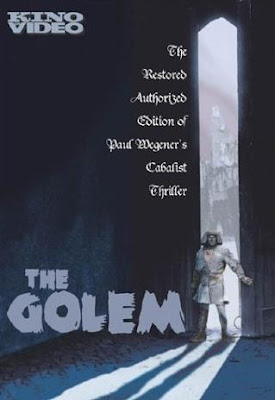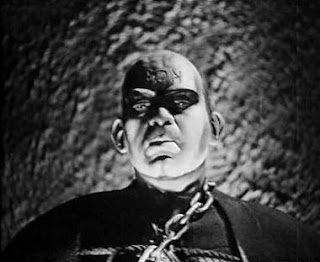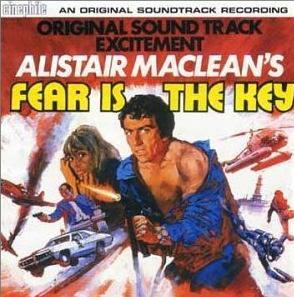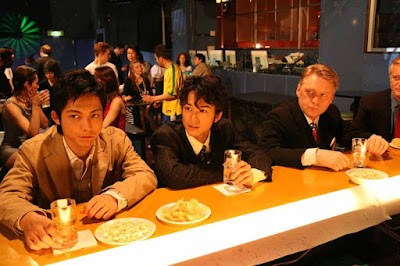
If I’d gone on holiday to Thailand, immersed myself in the usual tourist sights of monkeys, temples and statues of Buddha, got a bit homesick for my usual diet of Japanese TV, then taken some bad acid, I might have dreamt something looking like Hanuman vs 7 Ultramans.
It’s psychedelic, often makes no sense, and fuses the Japanese Ultraman universe with Thai mythology. You couldn’t make this stuff up anywhere else.
Ultraman is very popular in Thailand, so much so that this film was specially shot with the cooperation of Japan's Tsuburaya Productions, which extended to lending out the Ultraman suits and monster suits and helping with the special effects. Unwittingly, this started an international battle over the rights to the Ultraman characters outside of Japan. The lawsuit has only just been settled (see this Sci-Fi Japan news item for a July 2007 update and some great Hanuman v Ultraman posters).
 The plot, if you must... 2 young Thai boys try to stop 3 nasty crooks from stealing the head off a statue of Buddha from a ruined temple. (Shades of Ong Bak). One of the boys is killed, but instead of going to heaven, he becomes the monkey king Hanuman in giant form, or something like that. (It looks like two of the boys can transform into giant Hanuman - it’s confusing, and all in Thai.) Thus Hanuman takes his bloody revenge on the nasty crooks. Slow fade to black.
The plot, if you must... 2 young Thai boys try to stop 3 nasty crooks from stealing the head off a statue of Buddha from a ruined temple. (Shades of Ong Bak). One of the boys is killed, but instead of going to heaven, he becomes the monkey king Hanuman in giant form, or something like that. (It looks like two of the boys can transform into giant Hanuman - it’s confusing, and all in Thai.) Thus Hanuman takes his bloody revenge on the nasty crooks. Slow fade to black. But that's not all! Nearby, scientists are testing rockets that could spark rainfall in areas of drought. All very noble, but not very wise to have thirty fully fuelled rockets all on launchpads so close to the mission control buildings… in an earthquake zone.
But that's not all! Nearby, scientists are testing rockets that could spark rainfall in areas of drought. All very noble, but not very wise to have thirty fully fuelled rockets all on launchpads so close to the mission control buildings… in an earthquake zone. We inevitably get a spectacular rocket accident that causes an earthquake and wakes up five monsters who were living underground. Six (or is it seven) Ultramen then join Hanuman to save the day. Cue fighting, explosions and more monkey-dancing.
 It’s almost like the plot of two TV episodes stretched over 100 minutes. Especially because there is a LOT of padding. At the start there are two unfunny soldiers mucking around in a jeep, acting like circus clowns and going for a swim in what look like girls bathing suits. More padding comes from the boys and their friends doing a lot of Hanuman-type monkey-dancing at the temple.
It’s almost like the plot of two TV episodes stretched over 100 minutes. Especially because there is a LOT of padding. At the start there are two unfunny soldiers mucking around in a jeep, acting like circus clowns and going for a swim in what look like girls bathing suits. More padding comes from the boys and their friends doing a lot of Hanuman-type monkey-dancing at the temple.
More padding comes from Hanuman himself doing a victory monkey-dance in front of the six bored Ultramen. At the end of it all, Hanuman kisses every Ultraman goodbye. All very friendly but they don’t look at all impressed.



Like many Hong Kong films (up until the late eighties) all the dialogue is post-synched. That is, no location sound is recorded. All the voices are synchronised in later in a sound studio. This makes every scene sound like a small radio play. The acoustics are of a small room, the lip-synch is loose, the sound effects are sparse. The impressive-looking Hanuman and a sky god he meets in space have no processing on their voices – they just sound like normal people. Lazily, one of the monsters sounds exactly like Godzilla.
There’s also stock footage from the TV series to pad out the Air Force attacks on the monsters. Though the film has been shot in a very wide 2.35 anamorphic widescreen format (which has been crammed onto this DVD without letterboxing), the TV shots haven’t been cropped at all. The resulting effect is that shots intercut between normal-looking widescreen footage, and some very flat looking airplanes.

It’s a staggeringly strange film. I’m still don't get how all that monkey-dancing rates as entertainment. But, for fans of Thai pop culture, Ultraman completists, or seekers of the truly way-out, this is for you.
It must have been popular too, in Hanuman's next movie he met the 5 Kamen Riders.

Chaos at the rocket base










 Don’t be put off by the simplistic DVD covers and posters – they seriously let down the layered, stylish look of these films. Instead, check out the trailers on the Day Watch fansite
Don’t be put off by the simplistic DVD covers and posters – they seriously let down the layered, stylish look of these films. Instead, check out the trailers on the Day Watch fansite 













 Glamorous support is provided by Suzy Kendall, who was married to Dudley Moore at the time. You may know her from prominent roles in several key Italian horror films, like Dario Argento’s trendsetting The Bird With Crystal Plumage. Her fantastic screams, heard at various moments in the car chase, demonstrate her suitability for horror roles.
Glamorous support is provided by Suzy Kendall, who was married to Dudley Moore at the time. You may know her from prominent roles in several key Italian horror films, like Dario Argento’s trendsetting The Bird With Crystal Plumage. Her fantastic screams, heard at various moments in the car chase, demonstrate her suitability for horror roles. As Vernon's psychotic sidekick, Ben Kingsley appears in his first film role (according to IMDB) - almost as the younger incarnation of his character from Sexy Beast. It’s rare to see him with hair! His piercing eyes must have got him the job, and it's a substantial supporting role.
As Vernon's psychotic sidekick, Ben Kingsley appears in his first film role (according to IMDB) - almost as the younger incarnation of his character from Sexy Beast. It’s rare to see him with hair! His piercing eyes must have got him the job, and it's a substantial supporting role.


 To keep the humour current, the characters are updated with lookalikes of Kim Jong-Il, and film stars Schwarzenegger and Bruce Willis. But the resemblances are fleeting and the resultant comedy value is wasted. In fact, most of the comic potential is wasted, by not lampooning the movie further. The old scientist who bores everyone with his endless tectonic explanations should have been funny, but was just boring instead!
To keep the humour current, the characters are updated with lookalikes of Kim Jong-Il, and film stars Schwarzenegger and Bruce Willis. But the resemblances are fleeting and the resultant comedy value is wasted. In fact, most of the comic potential is wasted, by not lampooning the movie further. The old scientist who bores everyone with his endless tectonic explanations should have been funny, but was just boring instead! For me The Calamari Wrestler
For me The Calamari Wrestler 

 The cast are the usual crowd of good-looking teenagers, a similar ploy used in Thai horrors
The cast are the usual crowd of good-looking teenagers, a similar ploy used in Thai horrors 




